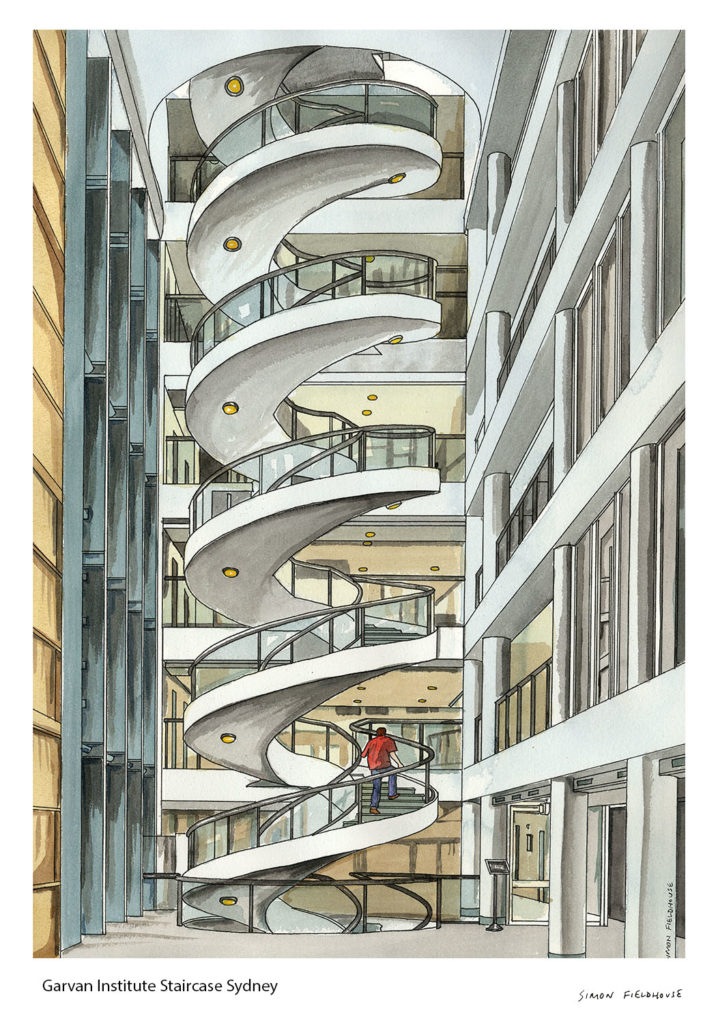
Garvan Institute of Medical Research
Garvan Institute of Medical Research has an iconic DNA-inspiredhelical staircase designed by Australian architect Ken Woolley .
Garvan Institute of Medical Research was founded in 1963 by the Sisters of Charity. Initially a research department of St Vincent's Hospital in Sydney, it is now one of Australia's largest medical research institutions with approximately 650 scientists, students and support staff. The current director is Prof John Mattick.
Garvan's research is focused on the major diseases that affect today's society: cancer, diabetes, osteoporosis, Alzheimer's disease, Parkinson's disease; as well as eating disorders, and autoimmune and inflammatory conditions such as rheumatoid arthritis and asthma. It specialises in genetic and molecular technologies, and emphasises collaborative research.
In 2014 the Institute became one of only three organisations in the world – and the only one outside the United States[1] – able to sequence the human genome at a base cost below $US1,000 each (the $1,000 genome) when it purchased the next generation of genome sequencing equipment, which is capable of sequencing 350 genomes a week (18,000 a year).
Funds for its establishment were provided by a centenary hospital appeal by the Sisters of Charity for St Vincent's Hospital. Helen Mills, the largest donor, asked for the centre to be named after her father, the lateJames Patrick Garvan (1843-1896), a distinguished New South Wales parliamentarian and business leader.
Construction of the original Garvan Institute building began in January 1962 on the corner of Victoria, Burton and Chaplin Streets. It consisted of a basement and three floors and allowed for the eventual development of a six floor building. The Institute was officially opened on 17 February 1963 by Bernard Marmaduke Fitzalan-Howard KG, GCVO GBE, the 16th Duke of Norfolk, with the opening ceremony attended by 1500 supporters and dignitaries.